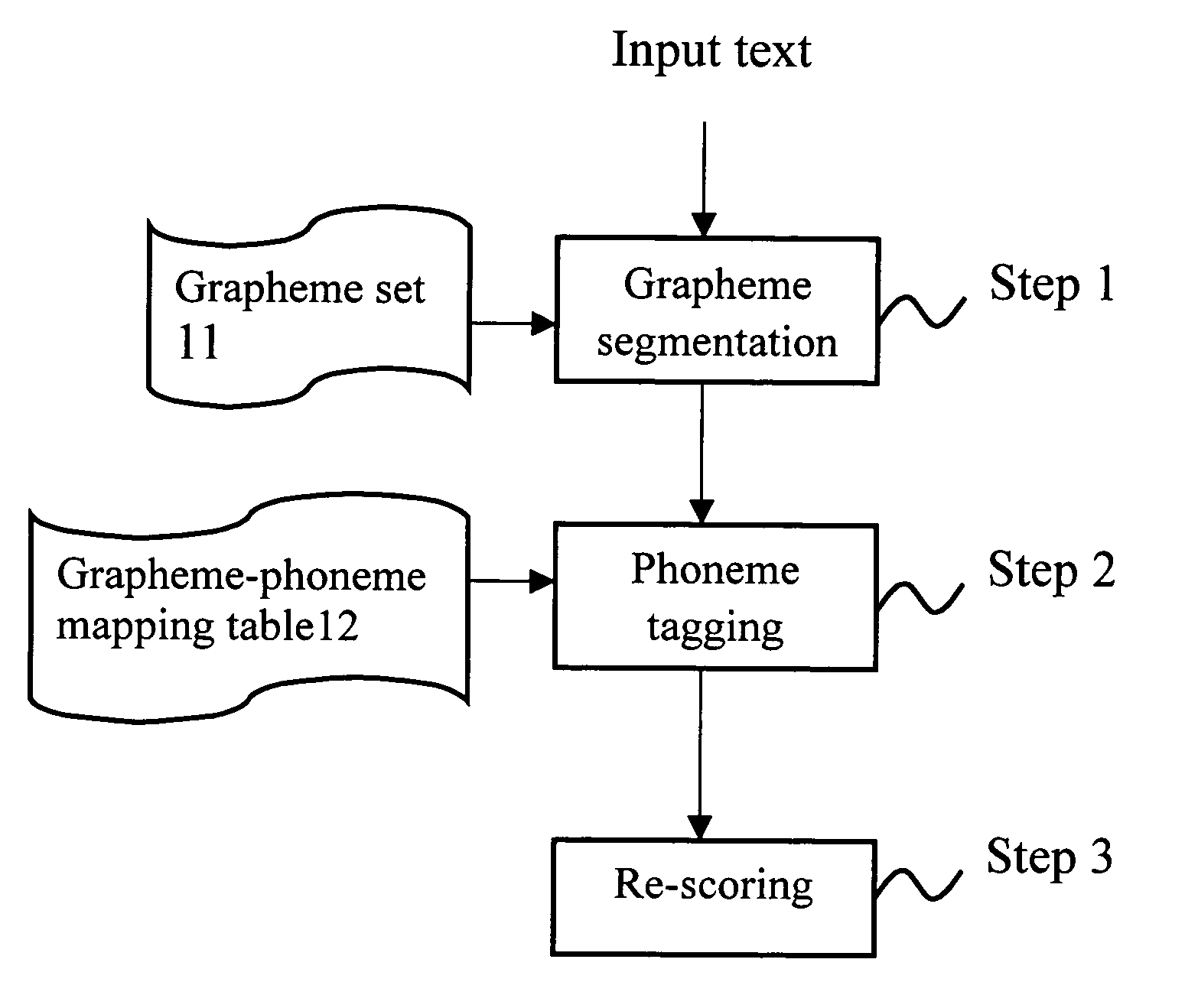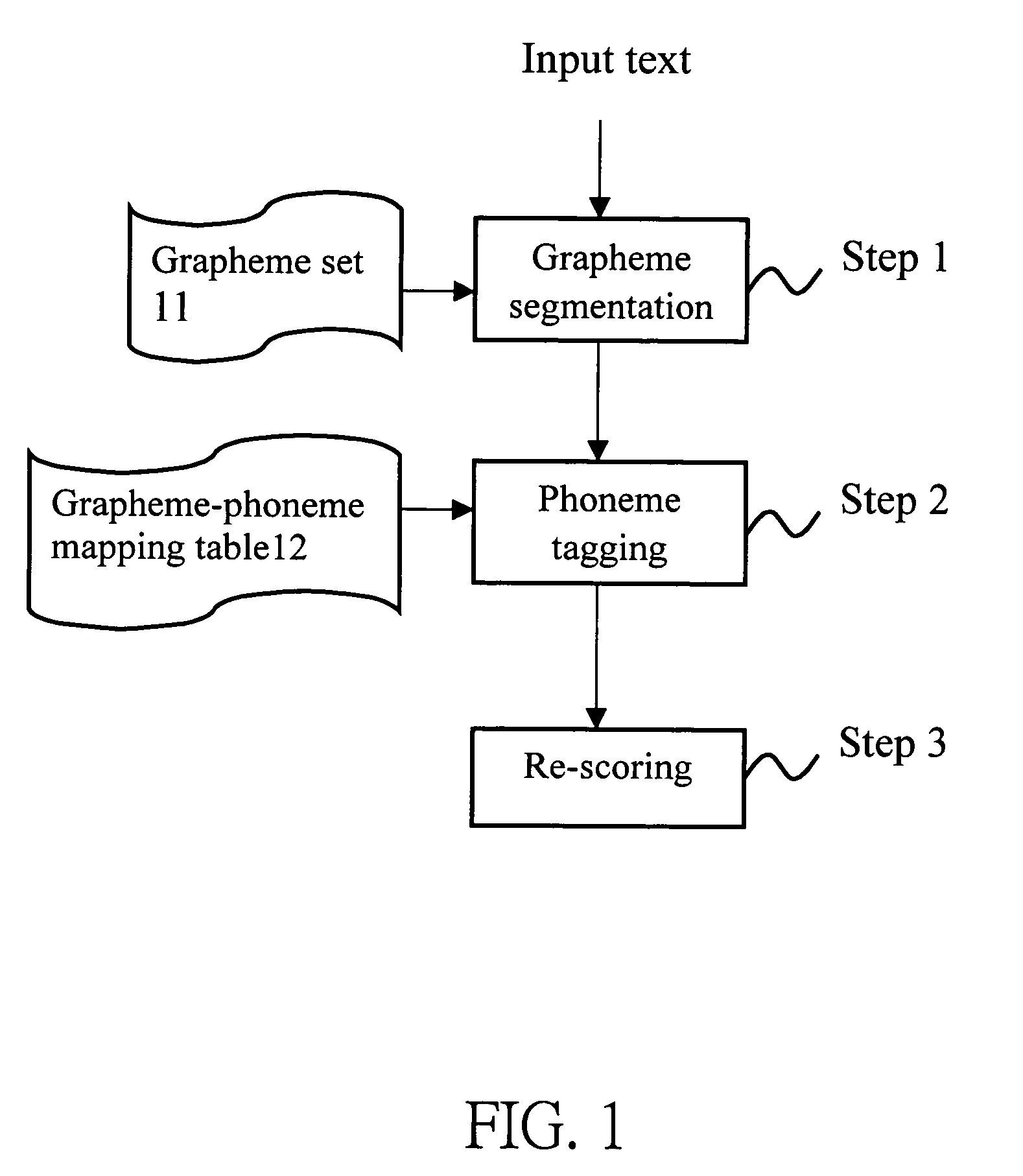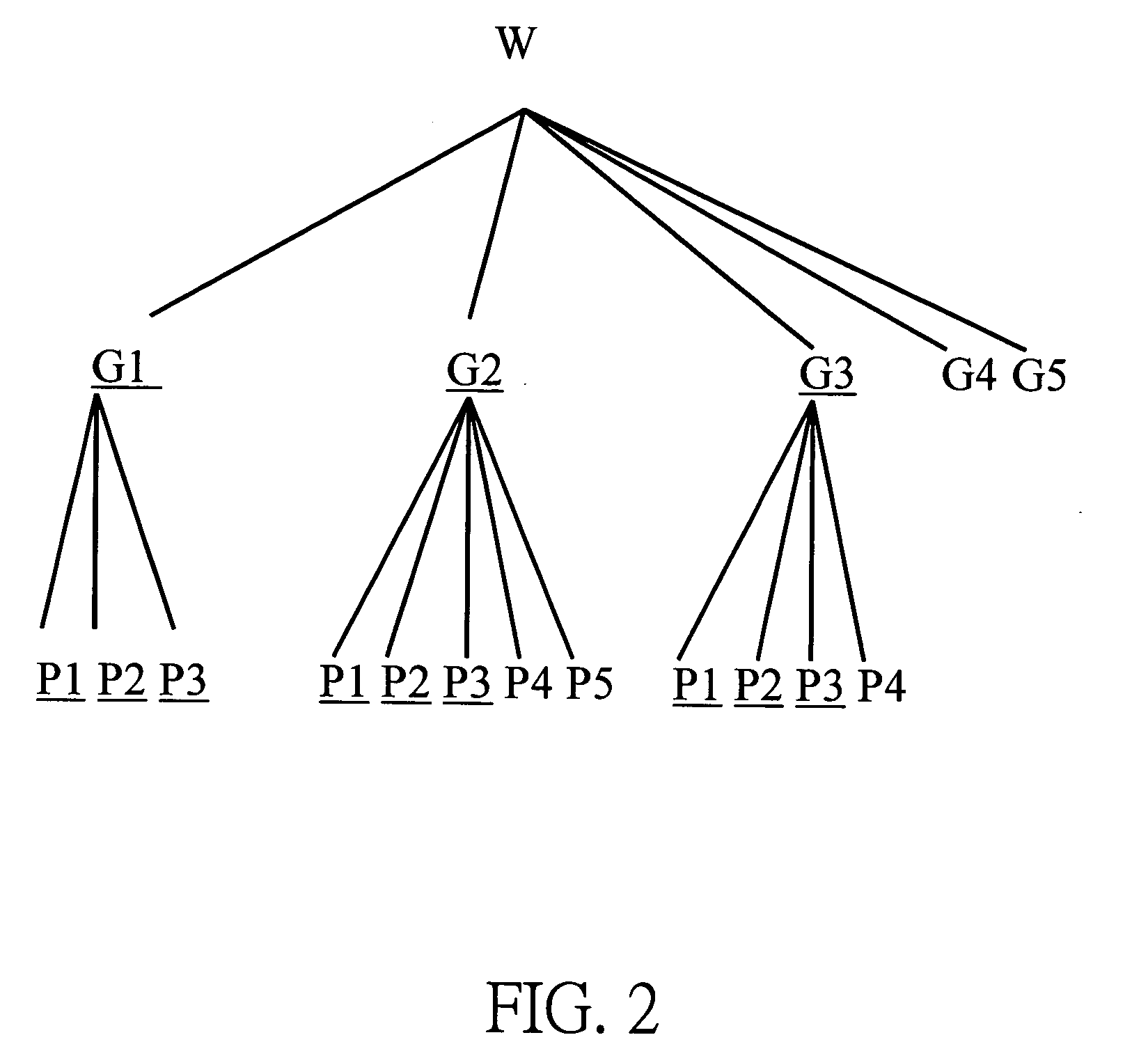Method for text-to-pronunciation conversion capable of increasing the accuracy by re-scoring graphemes likely to be tagged erroneously
a text-to-pronunciation conversion and grapheme technology, applied in the field of text-to-pronunciation conversion, can solve the problems of increasing the possibility of a new rule to contradict an existing rule, increasing the cost of modification and maintenance, and not covering all rules, etc., to achieve high accuracy and short time. , the effect of increasing the accuracy
- Summary
- Abstract
- Description
- Claims
- Application Information
AI Technical Summary
Benefits of technology
Problems solved by technology
Method used
Image
Examples
Embodiment Construction
[0015] Please refer to FIG. 1. FIG. 1 is a flowchart of a method according to the present invention for text-to-pronunciation conversion capable of increasing the accuracy by re-scoring graphemes likely to be tagged erroneously. The method utilizes a grapheme set 11 and a grapheme-phoneme mapping table 12 to perform a text-to-pronunciation conversion. First, grapheme segmentation is performed to input text (step 1) to obtain at least one grapheme sequence. The input text utilizes roman-spelling, or similar text such as English, German, French, etc. Next, phoneme tagging is performed to the grapheme sequence with higher accuracy (step 2) to obtain a phoneme sequence to generate a grapheme-phoneme pair sequence. Finally, additional features are added into the graphemes likely to be tagged erroneously, and then a re-scoring is performed (step 3).
[0016] In step 1, an N-gram module is used to perform the grapheme segmentation, which is performed to the input text, according to the graph...
PUM
 Login to View More
Login to View More Abstract
Description
Claims
Application Information
 Login to View More
Login to View More - R&D
- Intellectual Property
- Life Sciences
- Materials
- Tech Scout
- Unparalleled Data Quality
- Higher Quality Content
- 60% Fewer Hallucinations
Browse by: Latest US Patents, China's latest patents, Technical Efficacy Thesaurus, Application Domain, Technology Topic, Popular Technical Reports.
© 2025 PatSnap. All rights reserved.Legal|Privacy policy|Modern Slavery Act Transparency Statement|Sitemap|About US| Contact US: help@patsnap.com



